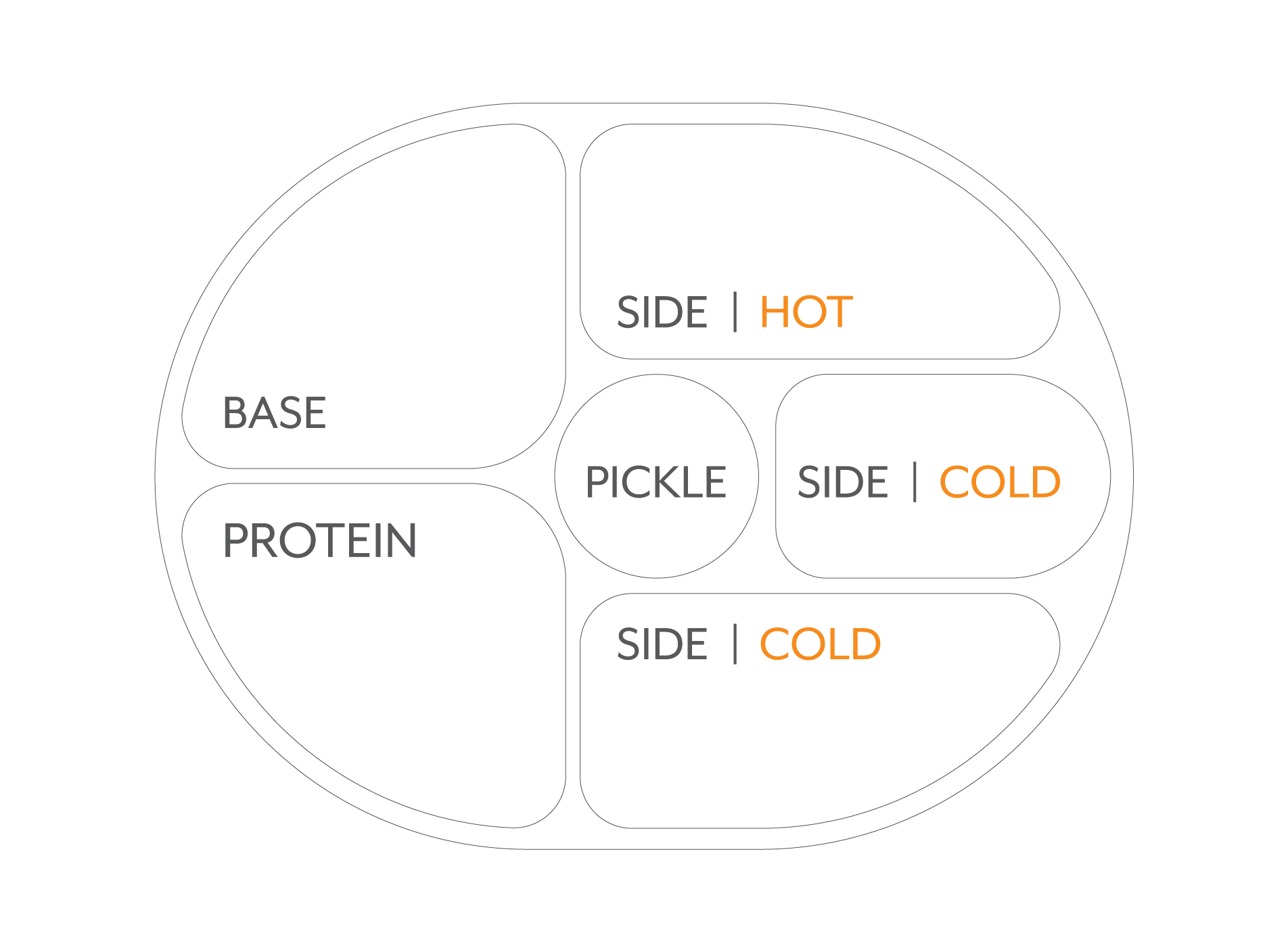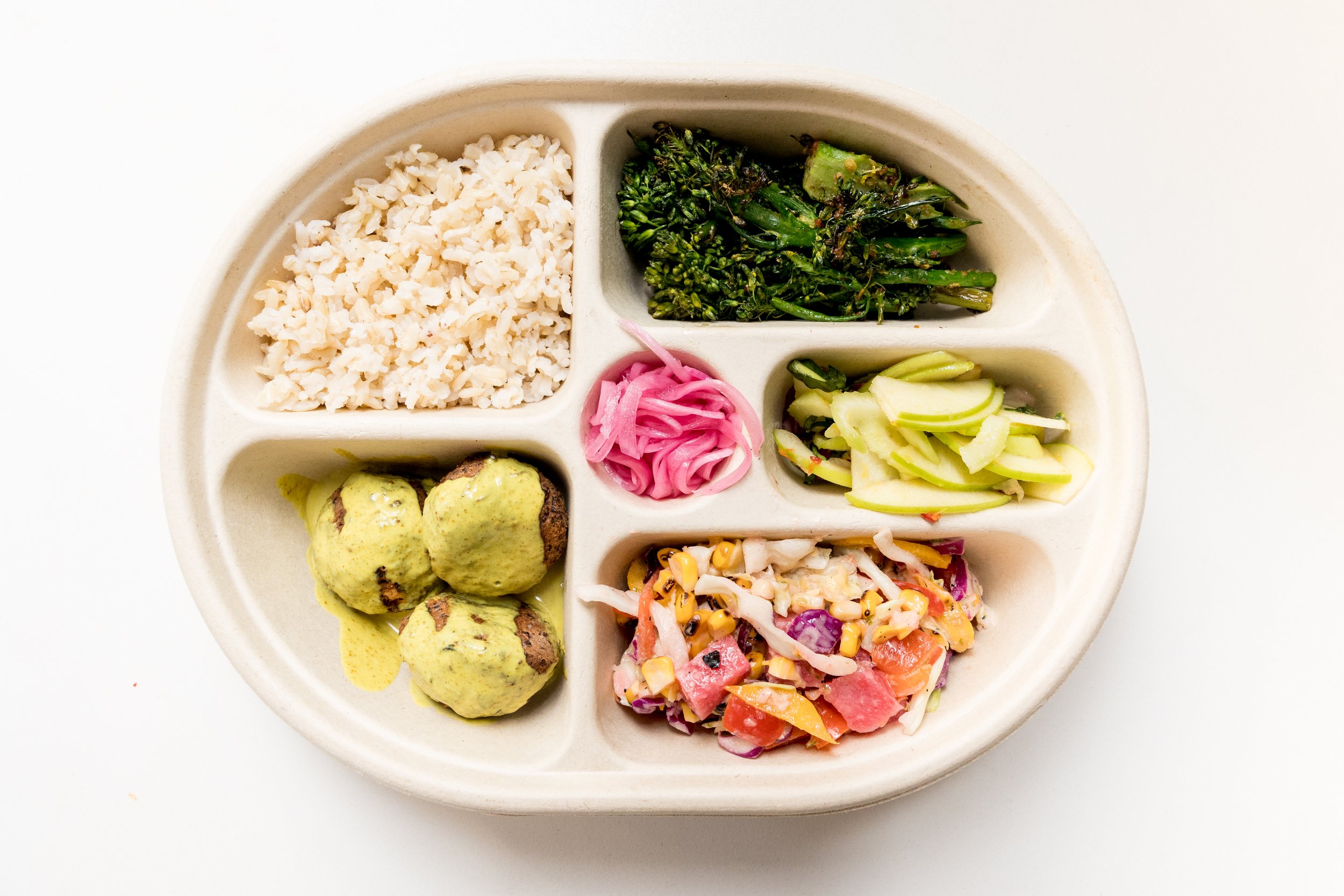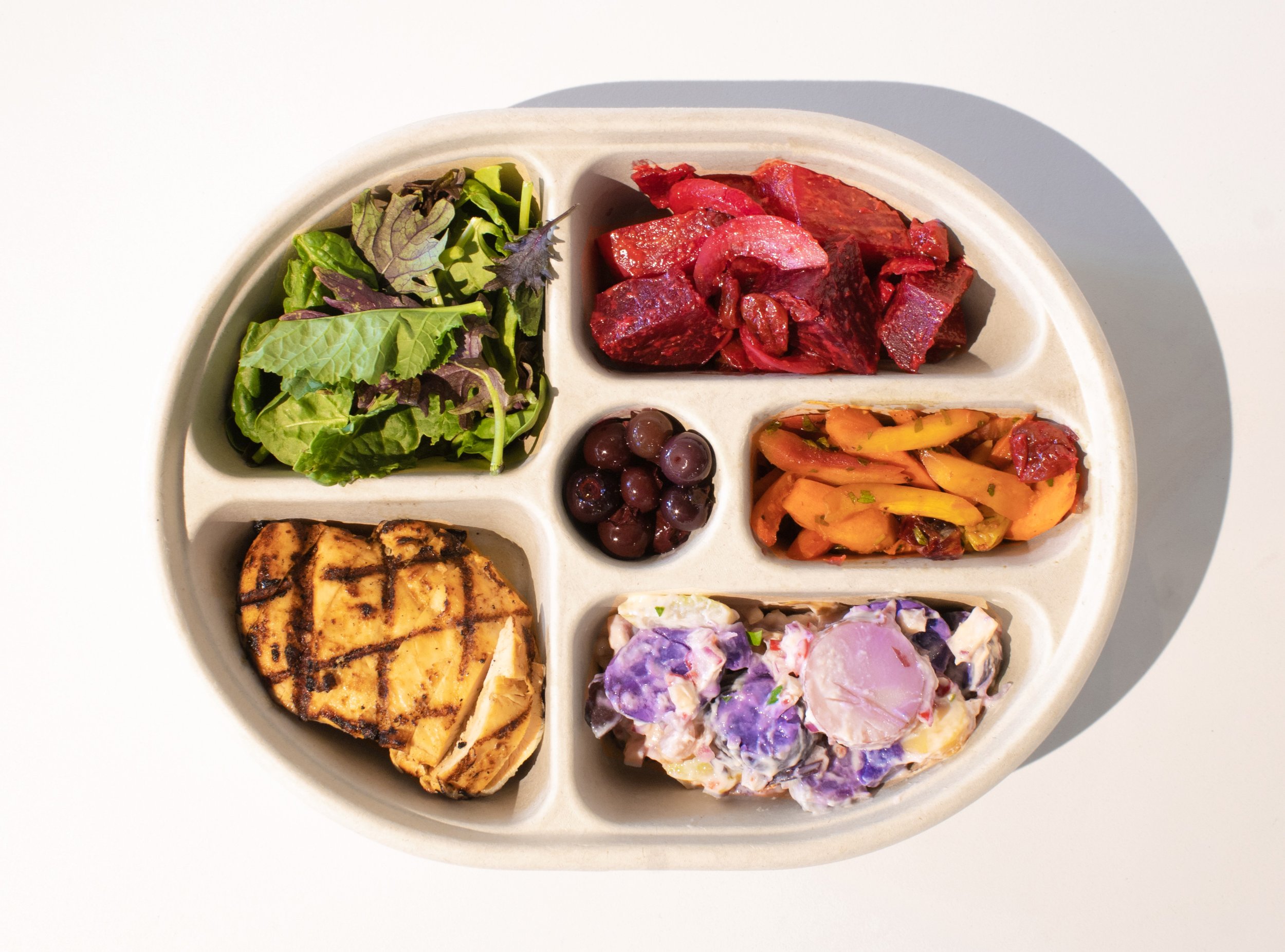What Is a Bento Box?
We've almost all heard of the bento box, but what exactly is it, and how is it different from the lunchboxes we've grown up with?
At its simplest, the bento or obento is a Japanese-style, ready-assembled, single-portion boxed meal. Like an American lunchbox, it's perfect for on-the-go eating, whether you're a schoolkid or a blooming member of the workforce. What makes the bento boxes distinct however, is its signature division of the box into multiple compartments as well as its rich cultural heritage.
A bento box will comprise of typically up to six separate compartments, with a bento usually containing a carb (such as rice or noodles), a protein (usually fish, meat or eggs), vegetables (think edamame, mini tomatoes, broccoli), and often fruit as dessert or a pickled vegetable to temper the palate. Traditionally, these components should appear in a 4:3:2:1 ratio respectively, which ensures a harmonious and balanced meal that is not only healthy, but visually striking.
How the Bento Box Benefits Your Dietary Lifestyle
Bento boxes provide variety. By separating each food item, the bento box ensures that each flavor and texture is distinct. This prevents unique flavors from being muddled and ensures that while the meal is a complete whole, each ingredient can be fully and self-sufficiently enjoyed. Furthermore, this encourages appreciation for the breadth of options available through endless combinations of diverse ingredients.
Bento boxes promote healthy eating habits. Bentos help define "healthy" eating with consideration for moderation and diversity. Rather than obsessively and strictly hailing certain foods as "good" and condemning others as "bad", one can enjoy a bento that offers a well-balanced meal featuring colorful and varied food groups. At the same time, the set layout and sizes help diners easily control their meal portions in a way that complements their health goals.
A Brief History of the Japanese Bento
The word bento was originally derived from the Southern Song Chinese term biandang, which was slang for "convenient" — a defining feature of the food that has remain unchanged throughout centuries.
While the first records of these packaged meals date as far back as 5th century Japan, it wasn't until the 16th century that the word bento was introduced, as samurai Oda Nobunaga had single-serving, packaged meals prepared for the people of his estate. By the Azuchi-Momoyama period (1568 —1600), the true boxed bento that we know today had started to come into existence; these lacquered boxes would commonly be used to hold food meant to be enjoyed during cherry blossom viewing and outdoor tea ceremonies. As the bento's popularity continued to grow throughout the Edo and Meiji periods (1630 — 1912), its use and role in Japanese culture grew with it; bentos were enjoyed as elegant picnic boxes, served to theatregoers during intermission, and proudly prepared and sold at regional train stations across the country (to this day!)
Nowadays, bento boxes continue to mirror the nuanced and always-changing design preferences, food needs, and values of the people. Whether it's a kyaraben ("character bento" that takes fun inspiration from anime, pop culture references and media), oekakiben (picture bento reflecting nature, monuments or other visual element), or even shikaeshiben ("spite/ revenge bento" made with unsavory design or unlikable ingredients to show displeasure to the receiver), the bento continues to be an accessible, well-loved and multifaceted vessel that is now appreciated well beyond its Japanese origins.
The BLOOM Box
The bento box's long history and standout utility makes it a unique symbol that not only upholds enduring Japanese ideals, but also evolves to suit contemporary needs across all walks of life.
Our BLOOM Box reimagines and builds upon the traditional bento in a way that is authentic to its character, offering a refreshing new strand to add onto a rich cultural tapestry. Our BLOOM boxes pay homage to age-old values such as attention to craftsmanship, pride in artistry, appreciation for diversity, and consideration for accessibility — while showcasing a dedicated, renewed focus on health and wellbeing.
Please stay tuned to learn more in our next post(s) about how we talk the talk and walk the walk!






